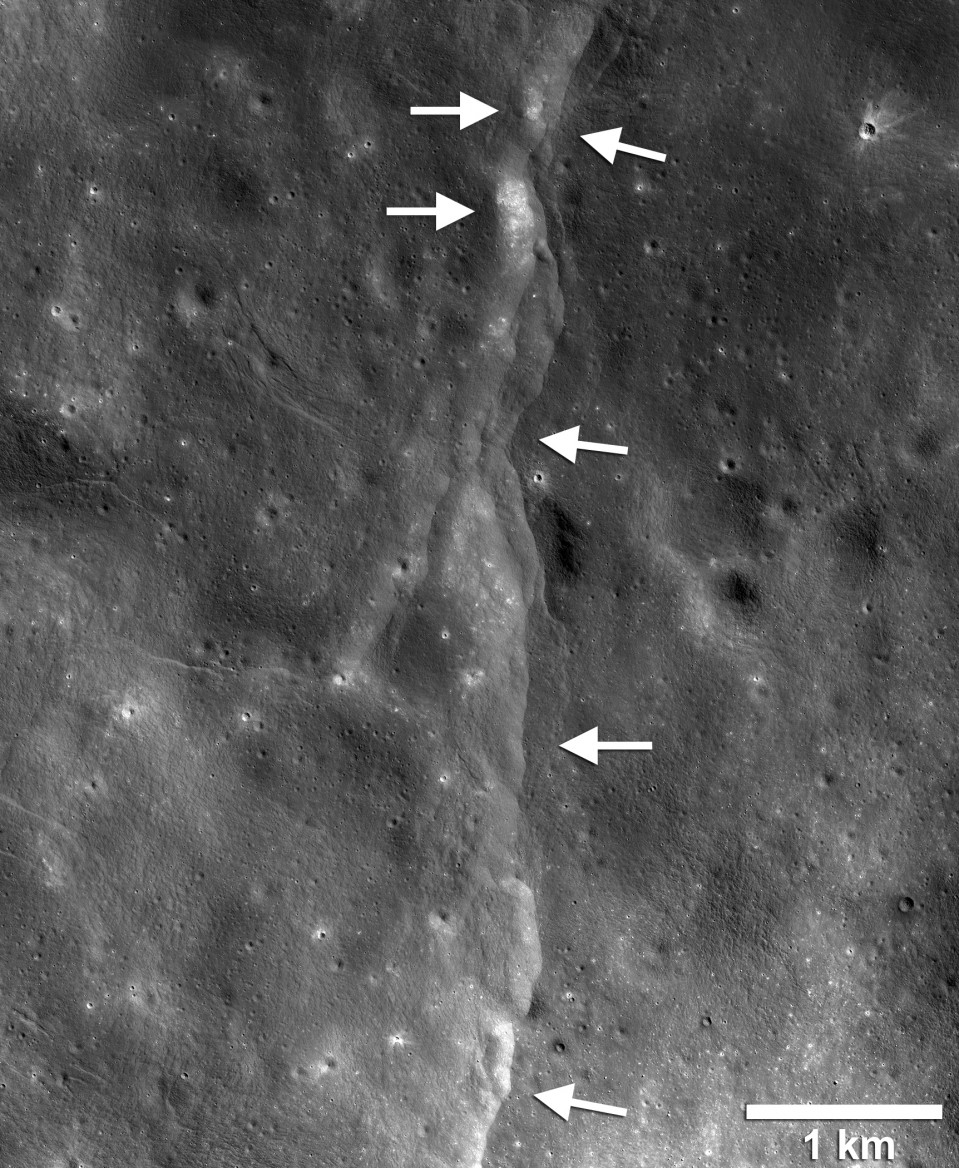Space
The moon is a lot more seismically active than we thought
When humans return to the moon, they’ll want to choose their landing site carefully.



Far from being the serene world that we may imagine when we look up at the night sky, the moon is restless. Tectonic activity makes moonquakes a regular occurrence, according to a paper in Nature Geoscience.
We’ve known that the moon shudders since four seismometers were placed on its surface during the latter stages of the Apollo program. The instruments were retired in 1977, but in the seven years that they were active, they recorded 28 moonquakes, ranging from about magnitude 1.5 to 5 on the Richter scale—at the upper end, enough to damage a nearby spacecraft or moonbase.
There have been a range of theories about what causes quakes, including meteorite collisions or gravitational forces exerted by the Earth and sun. A team of researchers have now reanalyzed the data along with detailed images captured by the Lunar Reconnaissance Orbiter, which was launched in 2009.
While circling the moon, the Lunar Reconnaissance Orbiter snapped pictures of its surface using an ultra-precise camera. Analysis of the imagery shows that the lunar surface is covered in small, shallow, cliff-like features: faults.
The lines of the faults appear crisp, says Thomas Watters, a senior scientist at the Center for Earth and Planetary Studies in Washington, DC, who led the team, and they cut across craters that are thought to be less than 50 million years old, so they must be relatively recent. The images also show that boulders on the moon have moved in recent decades, which indicates seismic activity.
The research also sheds some light on the moon’s internal composition. Because the moon doesn’t have plate tectonics like Earth, moonquakes are believed to be caused by the cooling of the lunar interior, as well as Earth’s gravity.
However, the shallow moonquakes could indicate that the moon still has a warm, and potentially even molten, core. This is despite a general scientific rule that smaller rocky bodies cool down more rapidly, Watters says.
NASA is currently working to return humans to the moon by 2024. They will need to take the potential for moonquakes into consideration by avoiding landing near or building any permanent structures on particularly “active” areas, Watters says.